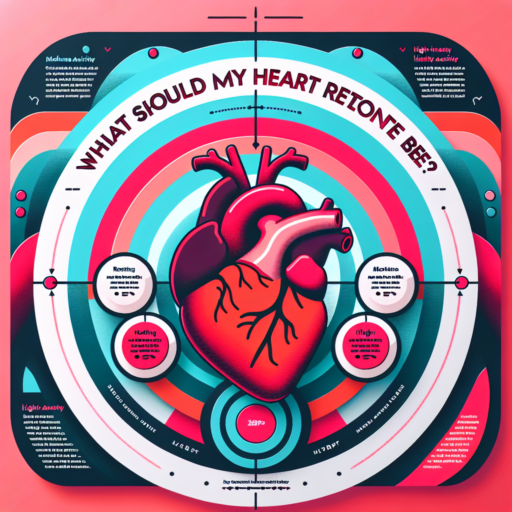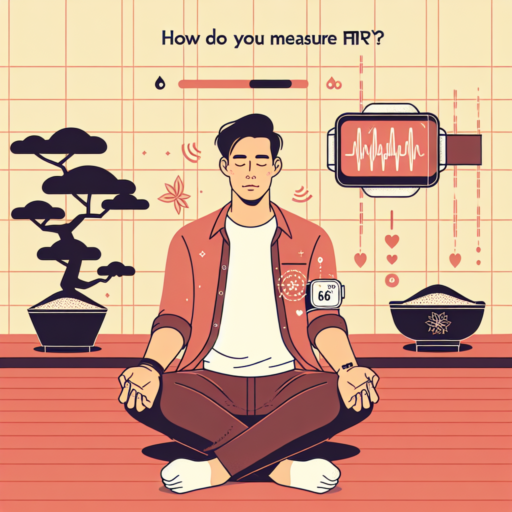What should my HRV be for my age?
Understanding what your Heart Rate Variability (HRV) should be for your age is crucial in assessing your cardiovascular and overall health. HRV refers to the variation in time between each heartbeat, which is influenced by your autonomic nervous system. It is considered a marker of your body’s resilience and the balance between its sympathetic and parasympathetic nervous systems. Essentially, a higher HRV suggests better cardiovascular fitness, stress management, and overall health.
Generally, HRV decreases as you age, meaning that your heart’s ability to adjust its rate according to your body’s demands decreases. For instance, younger individuals tend to have higher HRV compared to older adults, indicating a more responsive and flexible cardiovascular system. While there isn’t a one-size-fits-all answer, baseline HRV values tend to range widely among individuals. Factors such as fitness levels, stress, lifestyle, and even genetics play a significant role in your HRV readings.
To get a grasp of what your HRV should be for your age, it is advisable to refer to established HRV age charts or norms provided by credible sources. These charts can offer you a ballpark figure to determine where your HRV stands in comparison to others in your age group. Remember, while these charts provide a useful guideline, they should not be the sole determiner of your health status. It’s also important to consider how your HRV changes over time, tracking whether it’s improving, which could indicate enhancements in fitness and stress management, or if it’s declining, prompting a reevaluation of your lifestyle choices or a consultation with a healthcare provider.
Moreover, measuring your HRV regularly using reliable devices and apps can provide valuable insights into your health and help you adjust your lifestyle for better heart health and overall well-being. Keeping an eye on your HRV, alongside understanding what it should be for your age, can empower you to make informed decisions about your health and fitness routines.
What is a healthy HRV level?
Understanding the concept of a healthy Heart Rate Variability (HRV) level is crucial for gauging general wellness and stress resilience. Essentially, HRV measures the variation in time between each heartbeat, which is influenced by the autonomic nervous system. A higher HRV represents a robust and responsive autonomic nervous system, indicating good cardiovascular fitness and stress management capabilities. Conversely, a lower HRV can be a sign of stress, fatigue, or underlying health issues.
A «healthy» HRV level varies significantly across individuals, influenced by factors such as age, fitness level, and genetics. Typically, for adults, an HRV between 20-100 milliseconds (ms) is considered within a normal range. However, it is essential to understand that HRV is relative; what’s healthy for one person might be low or high for another. Continuous monitoring and understanding your baseline can offer more insight into what’s optimal for you rather than relying on generic benchmarks.
Factors Influencing HRV
- Age: HRV tends to decrease as you age, reflecting the natural decline in autonomic nervous system efficiency.
- Fitness Level: Individuals with higher cardiovascular fitness often exhibit higher HRV levels, indicative of a healthier heart and better stress management capabilities.
- Stress and Lifestyle: High stress, poor sleep quality, and unhealthy lifestyle choices can negatively impact HRV, reducing its levels.
Monitoring your HRV can offer valuable insights into your health and wellness, guiding lifestyle adjustments for improved well-being. However, it’s essential to approach HRV data as part of a broader health assessment, not in isolation.
No se han encontrado productos.
Should I worry if my HRV is low?
Understanding your Heart Rate Variability (HRV) is crucial to comprehending your body’s stress levels and recovery state. A low HRV can signal that your body is under stress or not recovering adequately. But before you worry, it’s essential to consider the context of your readings.
Firstly, individual baseline variations are significant. HRV differs greatly among individuals due to factors like fitness level, age, and genetic predispositions. If your HRV is consistently low compared to your personal average, it may warrant further investigation. However, a singular low measurement isn’t necessarily a cause for immediate concern.
Factors Contributing to Low HRV
- Lack of sleep – Poor sleep quality or insufficient sleep duration can lower HRV.
- High stress levels – Chronic stress affects your autonomic nervous system, reducing HRV.
- Overtraining – Excessive physical strain without adequate recovery can lead to a decrease in HRV.
Monitoring trends over time and understanding how lifestyle factors affect your HRV can be more informative than focusing on a single data point. If low HRV persists, it may be beneficial to consult with a healthcare professional to rule out any underlying conditions that may be influencing your readings.
Does higher HRV mean more fit?
In the context of fitness and overall health, Heart Rate Variability (HRV) has been spotlighted as an intriguing indicator. The question arises: does a higher HRV indeed signify a more fit individual? It is essential to delve into what HRV actually represents and its implications on fitness levels.
Understanding HRV’s Link to Fitness
HRV, the variation in time between consecutive heartbeats, is often viewed as a mirror reflecting the body’s ability to manage stress, both physical and mental. A higher HRV is widely interpreted to indicate a more resilient autonomic nervous system, thus suggesting enhanced fitness. This is because a more variable heart rate during rest times embodies the body’s adeptness at shifting gears, preparing for action, and then calming down efficiently.
It’s vital to acknowledge, however, that HRV is influenced by a myriad of factors including age, genetics, lifestyle choices, and even the time of day. While athletes and highly fit individuals tend to show higher HRV readings, suggesting a robust cardiovascular system and better stress management, this metric alone cannot paint the full picture of an individual’s fitness level.
Therefore, while a higher HRV can be a desirable trait in the context of fitness, it is just one piece of the puzzle. Other factors such as muscle strength, endurance, flexibility, and body composition also play critical roles in defining overall fitness. Hence, HRV should be considered alongside these factors for a holistic view of physical health.




